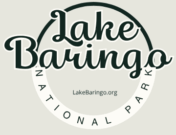Lake Baringo, located in the northern stretch of Kenya’s Great Rift Valley, is one of the country’s most historically, ecologically, and culturally significant freshwater bodies. Although not as famous as Lake Nakuru or the Maasai Mara, its deep geological past, human history, and modern conservation relevance make it a unique part of Kenya’s natural heritage.
🌍 Geological Origins
Lake Baringo was formed millions of years ago during the tectonic rifting that created the East African Rift Valley.
- The lake lies in a rift depression, flanked by the Tugen Hills to the west and the Laikipia Escarpment to the east.
- Volcanic activity shaped the region, giving rise to lava flows, basalt ridges, and several volcanic islands in the lake (e.g., Ol Kokwe and Samatian Islands).
- Over millennia, these geological processes created a shallow, freshwater lake with an average depth of 5–7 meters, covering about 130 km².
Unlike other Rift Valley lakes (which are often saline or alkaline), Lake Baringo is freshwater, fed by rivers such as Molo, Ol Arabel, and Perkerra, and drained only by underground seepage.
🧬 Early Human Settlement & Cultural Significance
🔸 Prehistoric Evidence
- The Tugen Hills, west of Lake Baringo, are famous for yielding fossils of early hominids, including remains of Orrorin tugenensis—one of the earliest known human ancestors, dating back over 6 million years.
- Archaeological findings show that early humans utilized the region’s riverine and lake ecosystems for food, water, and settlement.
🔸 Indigenous Communities
- The Il Chamus (Njemps) people are the indigenous community of Lake Baringo. Related to the Maasai linguistically, they are unique for being traditionally both fishermen and pastoralists—a rare combination among East African communities.
- The lake plays a central role in their identity: fishing, boat-building (using dugout canoes), and seasonal migration patterns are tied to water levels and fish availability.
- Other nearby communities include the Pokot, Tugen, and Turkana, each contributing to the lake’s cultural mosaic.
🐾 Ecological Importance & Early Recognition
Lake Baringo has long been noted for its remarkable biodiversity, especially its:
- Birdlife: Over 470 bird species, including rare hornbills, eagles, and migrants.
- Freshwater fish: Such as tilapia and African catfish, critical for local subsistence.
- Reptiles and amphibians: Particularly snakes, monitor lizards, and terrapins.
- Unique vegetation: Like acacia woodlands, papyrus swamps, and dryland bush.
🌿 These attributes led early conservationists and naturalists in the mid-20th century to promote the lake as a key ecological and ornithological site in Kenya.
🏞️ Formation of Lake Baringo National Park
While Lake Baringo is not a “gazetted” national park under the Kenya Wildlife Service in the strict legal sense, it is recognized as a protected natural area under county conservation efforts and regional tourism frameworks.
Key milestones:
- 1970s–1980s: Rise in tourism interest, especially among birdwatchers, researchers, and international ecologists.
- Community conservation initiatives began through local camps like Robert’s Camp and collaborations with birding groups.
- 2000s: Included in Kenya’s Important Bird Areas (IBA) list by BirdLife International.
- 2011: Became part of the UNESCO Kenya Lake System World Heritage Site (alongside Lakes Nakuru and Bogoria) due to its ecological and geological significance.
Though not fenced or formally demarcated like traditional parks, Lake Baringo is recognized as a conservation priority and functions as a community-managed natural heritage zone.
📈 Tourism Development Through the Decades
| Decade | Highlights |
|---|---|
| 1970s–80s | Popular among researchers and expats; rise of birding tourism |
| 1990s | Expansion of eco-lodges and boat safari services |
| 2000s | Increased regional tourism tied to Rift Valley circuit (Baringo–Bogoria–Nakuru) |
| 2010s | Challenges with flooding, but greater awareness of conservation needs |
| 2020s | Renewed interest in offbeat and eco-tourism; rise of local guiding economy |
🌊 Environmental Challenges Over Time
Lake Baringo has faced significant environmental changes in recent decades:
🔹 Rising Water Levels
- Since 2011, the lake’s surface area has expanded dramatically, flooding homes, lodges, roads, and farmland.
- Experts attribute this to catchment degradation, deforestation in the Mau and Tugen Hills, and climate variability.
🔹 Pollution and Erosion
- Agricultural runoff, siltation, and plastic waste from nearby towns (especially Marigat and Kampi ya Samaki) affect water quality.
- Habitat loss threatens birds, fish, and the cultural lifestyle of fishing communities.
🔹 Loss of Biodiversity
- Rising water levels have submerged traditional nesting areas for birds and reptiles.
- Changing water chemistry has affected fish stocks and migratory bird behavior.
🦺 Conservation & Community Involvement
Conservation at Lake Baringo is community-driven and tourism-supported, featuring:
- Local birding guides and nature walks to promote eco-tourism
- Sustainable fishing practices championed by Il Chamus elders
- NGO-supported environmental education in nearby schools
- Partnerships with groups like Nature Kenya, BirdLife International, and Kenya Wildlife Clubs
Efforts focus on balancing development with ecological preservation, emphasizing inclusive management and cultural respect.
📸 Lake Baringo Today: A Living Heritage
Today, Lake Baringo is:
- A key destination for birders, nature photographers, cultural tourists, and scientific researchers.
- A model for community-based ecotourism, where locals lead the way in guiding, conservation, and storytelling.
- A symbol of Kenya’s complex relationship with nature, resilience, and the shifting challenges of climate change.
🧭 Legacy and Future Outlook
Lake Baringo’s future depends on:
- Sustainable land use in its catchment area
- Investment in eco-tourism and infrastructure
- Climate resilience and adaptive conservation planning
- Empowerment of local communities as custodians of the lake
🪶 Lake Baringo is not just a place—it’s a story of water, culture, survival, and coexistence. Its history continues to unfold with every ripple of its timeless waters.
